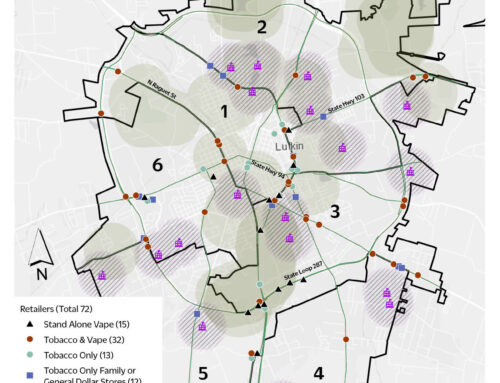As with all new years, there has been a lot of talk about resolutions. Maybe you’ve set some goals for yourself or seen the evidence of resolution motivation in the form of lines for the treadmills at the gym or friends taking rain-checks on drinks because of “Dry January.”
Along with losing weight/getting fit, drinking less, and spending less, quitting smoking remains an incredibly popular New Year’s resolution.
According to the CDC, so many people have quit that there are now more former smokers than current smokers in the US—which is amazing!—but 34 million adults continue to smoke cigarettes and tobacco is still the leading cause of preventable death in the country.
That’s why we’re thrilled the CDC has declared 2019 the “Year of Cessation.”
Now, when a lot of people think of cessation, they think of individual-level interventions. They think of counseling and getting a prescription for Nicotine Replacement Therapy (NRT). They think of chewing gum or patches or going cold turkey.
We’re not going to say those thoughts are wrong—our minds go there, too! But as a place-based public health consultancy, we think of the environments in which these soon-to-be former tobacco users live, work, and play. We think about the policies that are in place that make their communities either a supportive environment for cessation or an environment that hinders their success.
We think about the Health Impact Pyramid:

- At the top of the pyramid, you’ll find counseling and education;
- The next level down are direct clinical interventions;
- In the middle you’ll find protective interventions with long-term benefits (e.g., immunizations);
- The second level contains public health interventions that change the context for health (e.g., clean water, safe roads); and
- The base is made up of efforts to address socioeconomic determinants of health (poverty, education, racism, etc.)
In general, efforts closer to the base of the pyramid require less individual effort and have the greatest population impact while the top of the pyramid require more individual effort but have the smallest population impact.
Tobacco use cessation is perfect example of something that requires effort at the top and bottom of the pyramid. Coordination and balance among interventions on different levels of the pyramid would set up both individuals and populations for success.
Imagine the clock striking midnight on January 1, and a tobacco user resolving to quit. What’s going to help them stay quit for good? Research tells us that a combination of counseling and clinical therapy (like NRT) is the best for the individual, so they should definitely seek that out. But what about their environment? What’s life like at home and at work? What do they encounter on their commute? To really be successful, this person would benefit from policies that could make quitting a little easier, like policies that:
- decrease access to tobacco, like a retailer licensing ordinance that has density restrictions built in (e.g., tobacco retailers can’t be within 500’ of each other, or setting a maximum number of tobacco retailers in each city district);
- increase the price of tobacco (through taxes, minimum price and package size, and restricting coupons and discounts);
- prohibit the sale of tobacco in pharmacies, where this person is picking up their NRT and other products to improve their health; and
- prohibit tobacco use in certain areas (e.g., through clean air policies and tobacco-free campuses, housing, workplaces, parks, sidewalks, etc.).
Those policies, along with media campaigns with strong prevention and cessation messaging in stores, online, and via traditional media outlets can create an environment that is not only supportive of this person’s resolution to quit, but would also decrease tobacco use initiation so that there are fewer and fewer folks resolving to quit using tobacco every year! (Whew!)
In the CDC’s Year of Cessation announcement, Corinne Graffunder, Director of the Office on Smoking and Health, wrote:
A changing environment demands innovation to expand and improve efforts that help people quit as part of a comprehensive approach to prevent and reduce tobacco use. This includes leveraging emerging technology to deliver cessation interventions and to connect people with free cessation services, reaching the populations most severely impacted by tobacco use, working with a broad array of providers to routinely treat nicotine dependence, and ensuring that people who smoke have supportive environments—both clinical and nonclinical—that reinforce successful quitting.
We’re excited to help everyone working toward creating supportive nonclinical environments that reinforce successful quitting in 2019 and beyond through our technical assistance, training, and technology tools.





